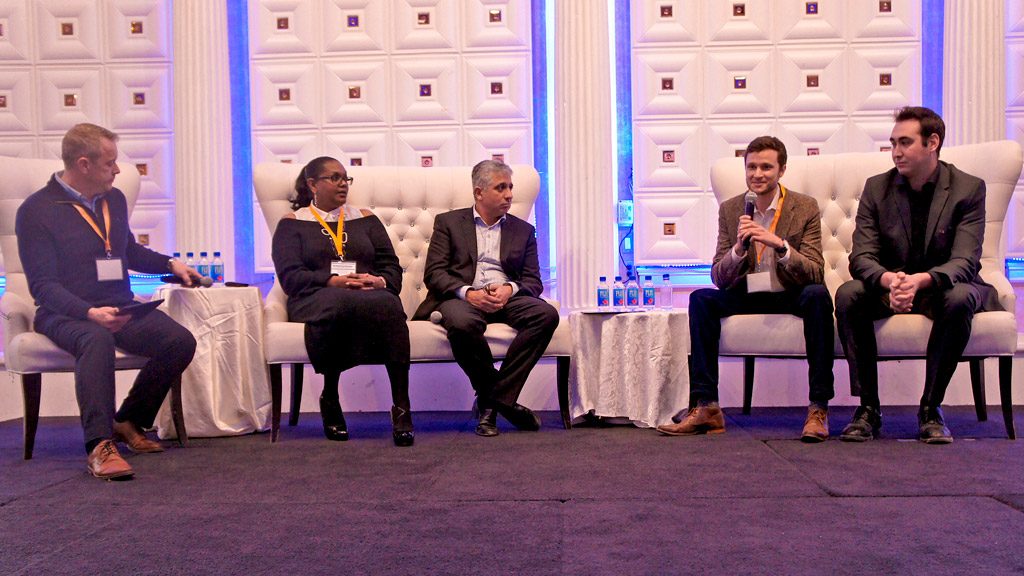Implementing technology in construction companies can be a challenge, but the key is to make sure everybody understands why change is needed, and why it’s critical to improving safety.
“It’s fundamental when you’re dealing with adults, they must understand why is it that things are changing and that’s the biggest hurdle,” said Sean Scott, senior district, health, safety and environment manager at PCL Construction. “Once you get over that hurdle and you get others to support, particularly your leaders or your management personnel in your company, then you hold others accountable. Allow them to be part of what those changes are going to be and reward them if they’re done properly. They have to understand how it will benefit them and improve health and safety.”
Using technology to improve safety in the workplace was the topic of a panel discussion at the Leadership Conference and Certificate of Recognition (COR) Open House held recently in Mississauga, Ont. The conference was hosted by the Ontario General Contractors Association and the Infrastructure Health and Safety Association.
Suzanne Johnson, environmental health and safety co-ordinator for Ball Construction, talked about the challenges of being the sole health and safety manager in a 95-year-old company.
“Because everything has done what it’s supposed to do for years, it’s really difficult to try and get in that mindset that now we need to change the way we do things,” she said, adding getting COR certified proved to be a challenge. “I literally said I cannot do this old school. I went to senior management and I said you need to provide me with some assistance and the best way to do that was to find software or some sort of technology that’s going to facilitate getting all these things done.”
The millennials are open to using technology, while older generations are taking a bit longer to adopt it, she noted.
“I told them if you can put an app on your phone, you can run this thing. It’s not that scary,” Johnson explained. “Finally, step by step, I got them to a point where they’re a lot more comfortable with the tools they’re using.
“You have to use positive reinforcement and give them full props for trying to use the program.”
Alex Snyder, co-founder of Site2Site and project manager with Snyder Construction, said some resistance is normal when implementing a tech solution.
“You’re going to find someone who is not going to appreciate technology as much,” he said. “Three years ago when we tried to get our guys to clock in, I remember one situation I asked one of the older guys what he wanted the password to be and he told me he wanted it to be ‘dog’ because that’s how I was treating him. It can be a slow process but eventually you will get there.”
He also talked about the importance of big data which is collected and analyzed with the help of computers.
“The key in a lot of safety programs is prevention. With prevention you do need all that data so that you can see where you’re failing and set benchmarks,” explained Snyder. “The only way all of this is possible is through technology, otherwise it becomes a very arduous venture and a lot of manpower.”
Using artificial intelligence to train workers on a machine is also much safer, said Adrian Bartha, chief executive officer for eCompliance.
“Machine learning will help drive safety participation across the workforce — this is being worked on right now for the construction industry, right here in Canada,” said Bartha. “It’s going to make a huge impact on safety culture.”
Emad Rizkalla, founder and CEO of Bluedrop Performance Learning (SkillsPass), said his company’s goal is to bring computers or smartphones and the record of training cards together, making it easier for workers and employers to access credentials in one place.
“What we have today is an unsustainable operating system. People have physical cards, they have to bring them onsite and it will be obsolete in a few years,” Rizkalla said, adding companies need to commit to going paperless. “The problem is not the employees, it’s all the people who show up on your site that you don’t know. They come to you with a piece of paper with the name of a training provider that you never heard of, it looks like there’s some white out on the card, you don’t know what that’s about. Those are the issues we’re set up to tackle.”











Recent Comments
comments for this post are closed